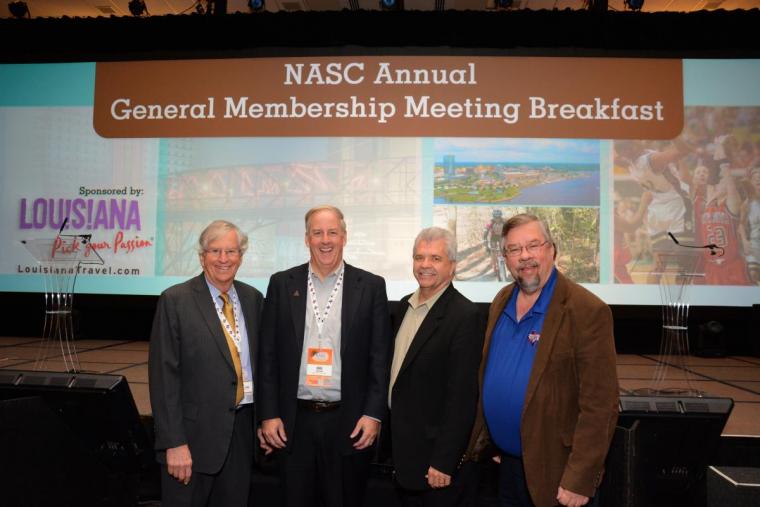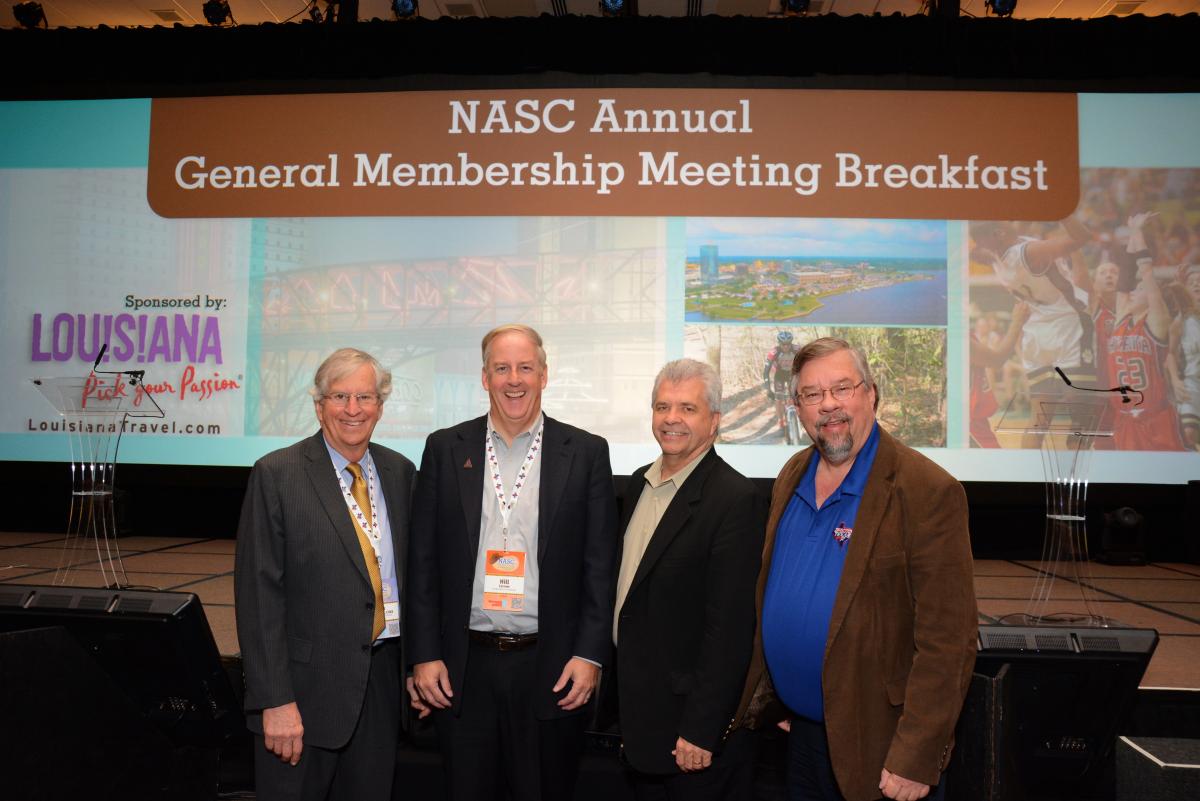

In a photo taken at the 2014 NASC Sports Symposium, Don Schumacher of NASC, Hill Carrow (Sports & Properties in Cary, NC); Mike Millay (Clancy’s Sports Properties, LLC, in Orlando, FL) and Dan Quandt (Amarillo Convention & Visitor Council, Amarillo, TX) are standing together at the General Membership Meeting Breakfast. What’s interesting is that they – plus a few others not shown – helped to kick-start NASC (and the sports event industry as a whole).
Contrast the picture showing people in professional dress, wearing name badges and standing in front of a stage with risers, with the early days.
“A bunch of us would get together and someone would have to pick up the bar tab,” says Dan Quandt. “That’s the way things were.”
“We actually went to a meeting called the Business of Sport Symposium,” Quandt adds. “I think the first one I attended was back in 1989. It was basically a convention of people who were involved in running different sports events. Hill Carrow tried to get a meeting together to talk about starting an association for sports commissions and nobody showed up.”
By the following year, he says, “Hill did get some people showing up.”
Initially, the board of directors for the group was made up of sports commissions, with Quandt the lone CVB representative. Even as an ex officio who did not have voting powers, Quant still refers to serving as “an honor” and enjoyed the day the bylaws were changed to make him a voting member of the board.
But something else was at work: nudged along by the board and the organization, an industry was starting to grow, and the public was noticing. So were the professionals in allied industries.
“I used to teach sports marketing at what is now DMAI, and what was then the International Association of Convention & Visitors Bureaus,” recalls Quandt. “I would have professional convention salespeople and they would get so angry when a sports event came to town. They would say, ‘There was this soccer tournament and they had 50 kids playing and the media was all over then, and I had 500 plumbers in town and nobody cared.’ I used to have to tell them, ‘Well, I hate to say this but sports are sexy and plumbing really isn’t.’”
Economic impact also started making headlines. Spurred by information NASC could provide, media outlets saw headline opportunities outside of the Super Bowl or World Series itself, and started covering information regarding room nights, visitor numbers and more.
Much of that, says Quandt, is attributable to Don Schumacher and the membership.
“Having Don as a leader has really been key to the success of this organization,” he notes. “He is an academic and really wants to make sure the world understands what sports events can do and why they are so important.”
The role of educating the public folds into NASC’s larger concern of keeping its members’ knowledge current.
“I think it is a tremendous role – the absolute first charge and first responsibility of this group was to make people professionals, so the dedication has always been to providing education and giving people the knowledge of how to do their job better. NASC has always taken that responsibility very seriously. If we’re not providing the tools to our members we’re not doing our job.”
And from disparate parts of an industry – sports commissions, convention and visitors bureaus, event owners, rights holders, vendors and more – the organization has created connectivity.
“This whole thing used to be a group of associations and organizations that weren’t cooperating at all. Now we have a trade show where you can sit down and talk to people like the USOC. Who wouldn’t want to talk to the USOC?” says Quandt. “Organizations used to be considered unapproachable. NASC has made the unapproachable into the approachable. It’s not just a door opener. It blasts the wall off the side of the building and you can come out into the sunlight and talk to people.”

